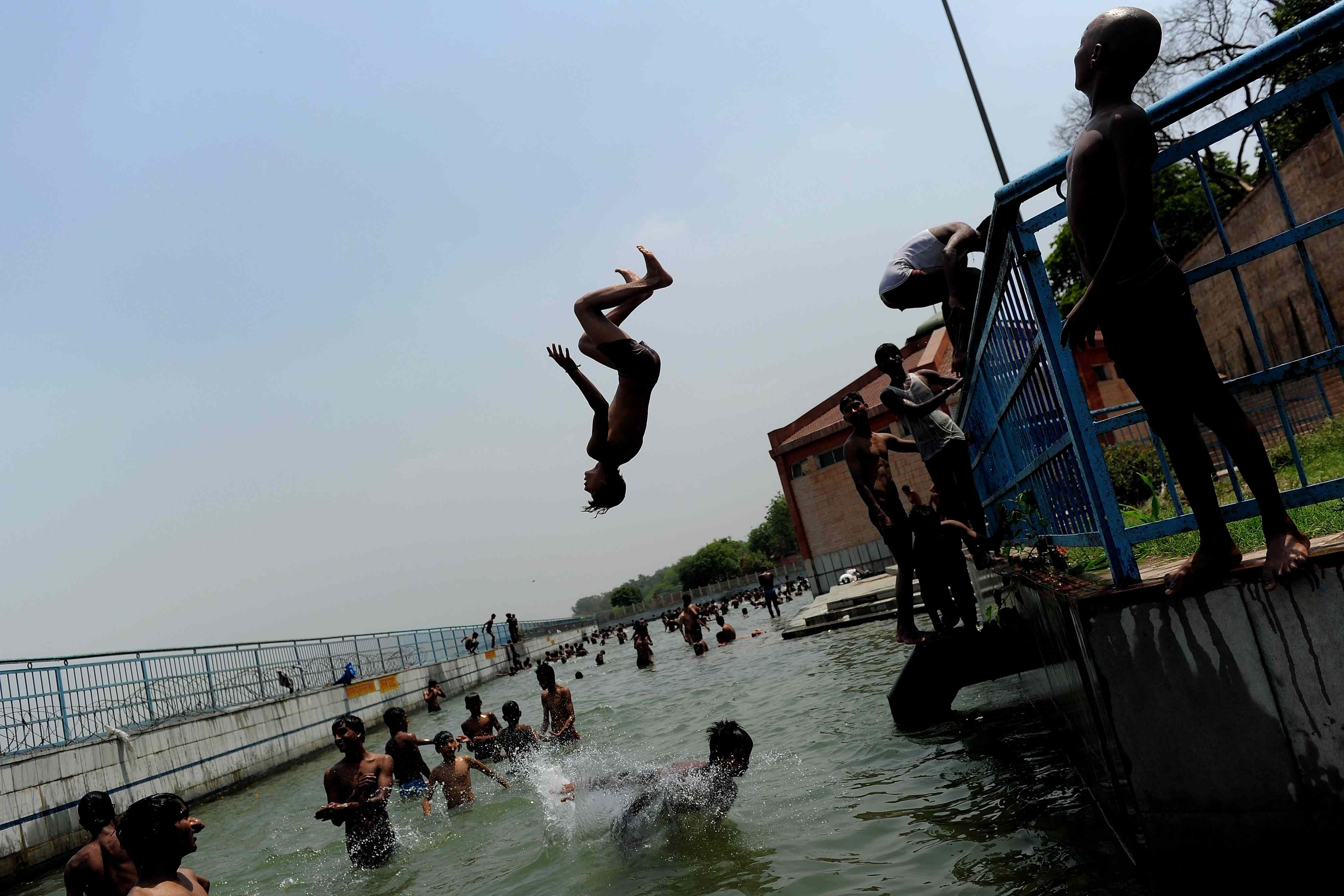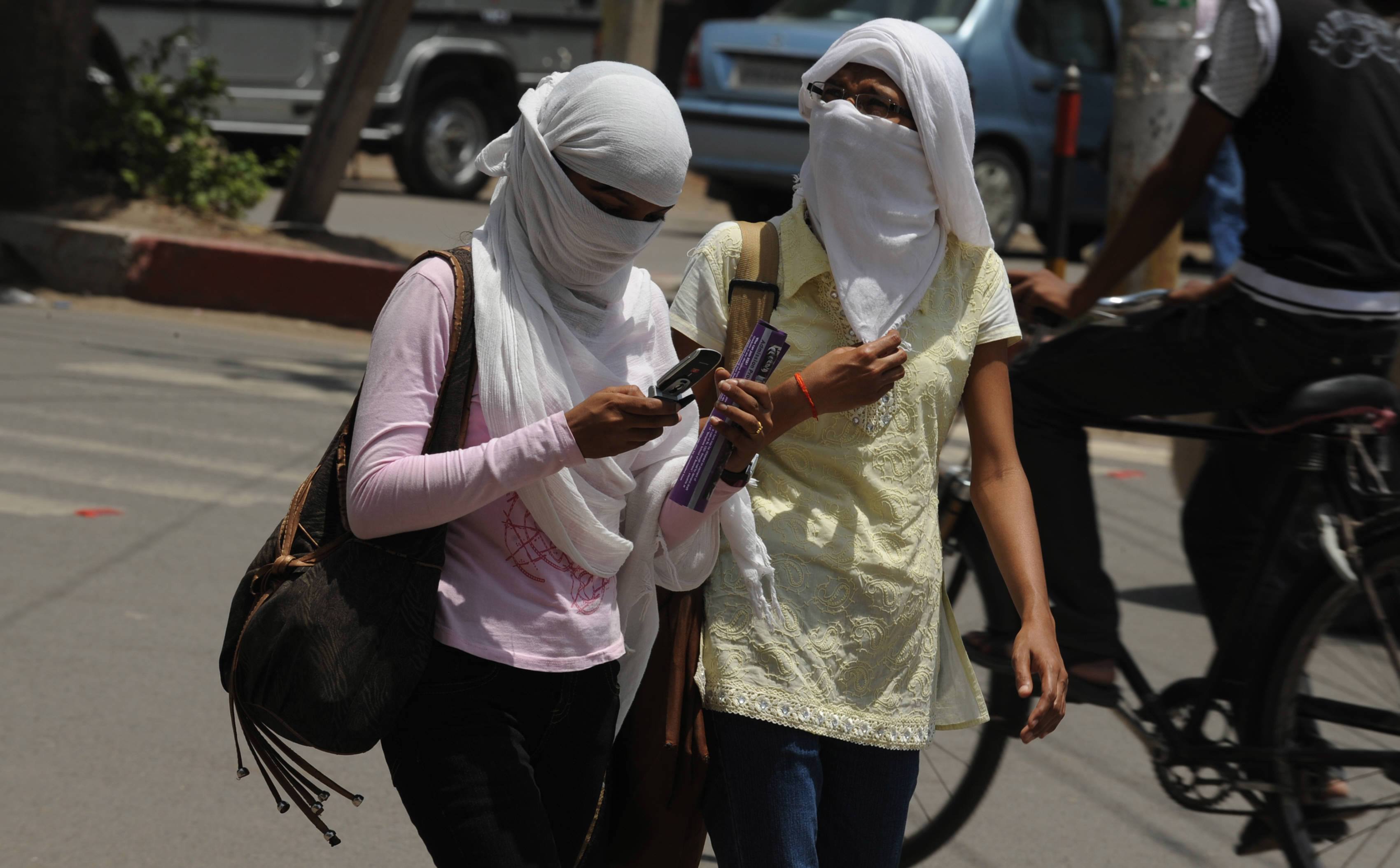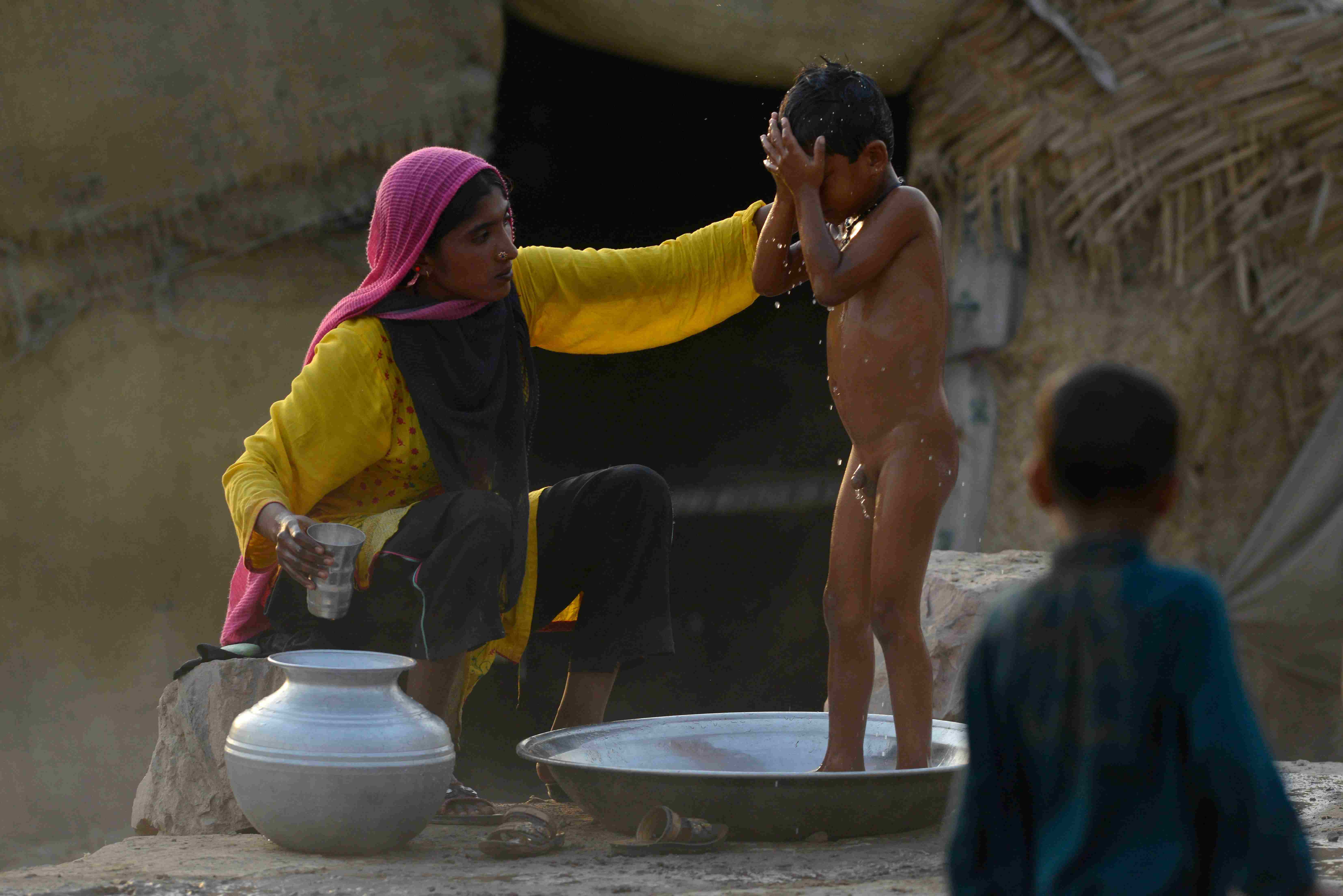South Asia could experience heatwaves close to the limits of survivability by the end of the century, said a study published in the journal Science Advances.
The study warned that Pakistan, India and Bangladesh, where one-fifth of the world's population live, would suffer.
It has illustrated the dangerous levels of high temperature and humidity, also known as wet-bulb temperature, which could cause illness and death, as the human body’s ability to cool itself weakened, the study said.
Survival chances
According to the research, humans can survive at an ambient wet-bulb temperature of 35 degrees Celsius, and if temperatures go up, it could cause death in just a few hours even for healthiest of person.

Indian youth cool off in a water pool in New Delhi on June 20, 2010. /AFP Photo
Examples of wet-bulb temperatures on earth exceeding 31 degrees Celsius in the current climate are rare. In 2015, the wet-bulb temperature in Iran was recorded close to 35 degrees Celsius.
Pakistan and India also saw a deadly heatwave that claimed hundreds of lives in 2015.
The temperature hit 51 degrees Celsius in the Indian city of Phalodi in Rajasthan the year after, marking its hottest day ever.
The researchers observed three vast regions, southwest Asia around the Persian and Arabian Gulf and the Red Sea, South Asia in the Indus and Ganges river valleys, and eastern China, where values exceed 28 degrees Celsius.
Cutting emissions
Currently, the level of threat is zero. However, it could hit a fatal level if global carbon emissions are not cut, the study warned.

Indian women, wrapped in cloth to protect them from the scorching heat, walk down a street in Allahabad on June 7, 2010. /AFP Photo
Four percent of the population would get exposed to wet-bulb temperatures of 35 degrees Celsius.
Fifty-five percent of the South Asian population, which also includes Afghanistan, Bangladesh, and Sri Lanka, would experience wet-bulb temperatures of 31 or 32 degrees Celsius, under the moderate mitigation model.
However, if emissions are contained, roughly in line with the Paris Climate Agreement, there would be no 35 degrees Celsius wet-bulb temperature heatwaves.

A Pakistani mother bathes her son on the outskirts of Lahore on May 14, 2017, as a heatwave hits the country. /AFP Photo
The report also showed that the critical 31 degrees Celsius wet-bulb temperature level would be passed once every two years for 30 percent of the population – more than 500 million people – if warming is unchecked, but for only two percent of the population if the Paris goals are met.
Killer heatwaves
A poll this week ranked fears related to the impact of climate change to on par with that of fears related to the ISIL terror group.
According to a Pew Research Center survey released on Tuesday, respondents in 13 countries said climate change was the greatest threat. In 17 countries, they saw ISIL as a bigger problem.
Pew’s senior researcher and a co-author of the study, Jacob Poushter, said that climate change and terrorism were seen as the most pressing dangers in most countries.
The US was an exception, he said in a report by The New York Times.









